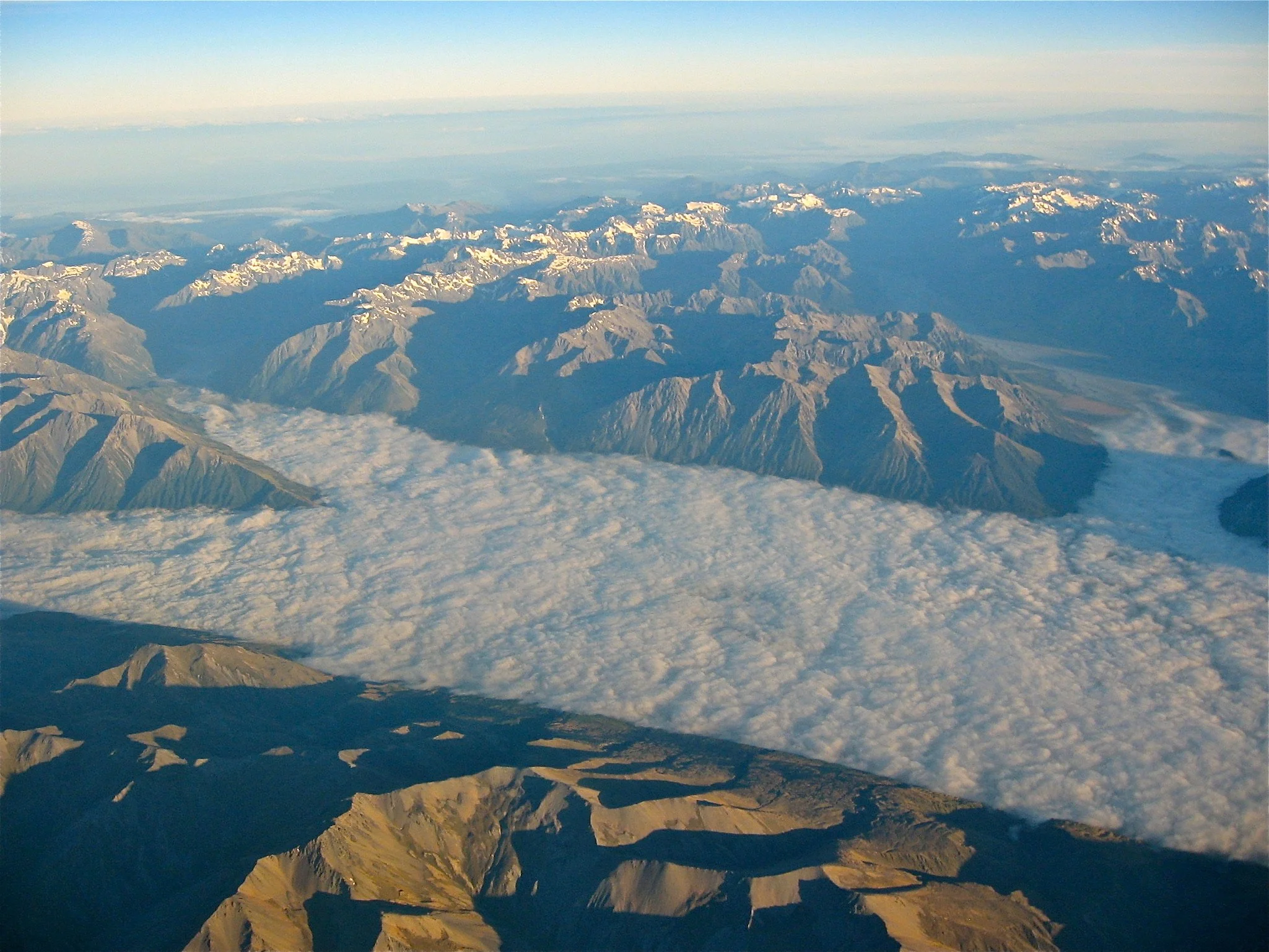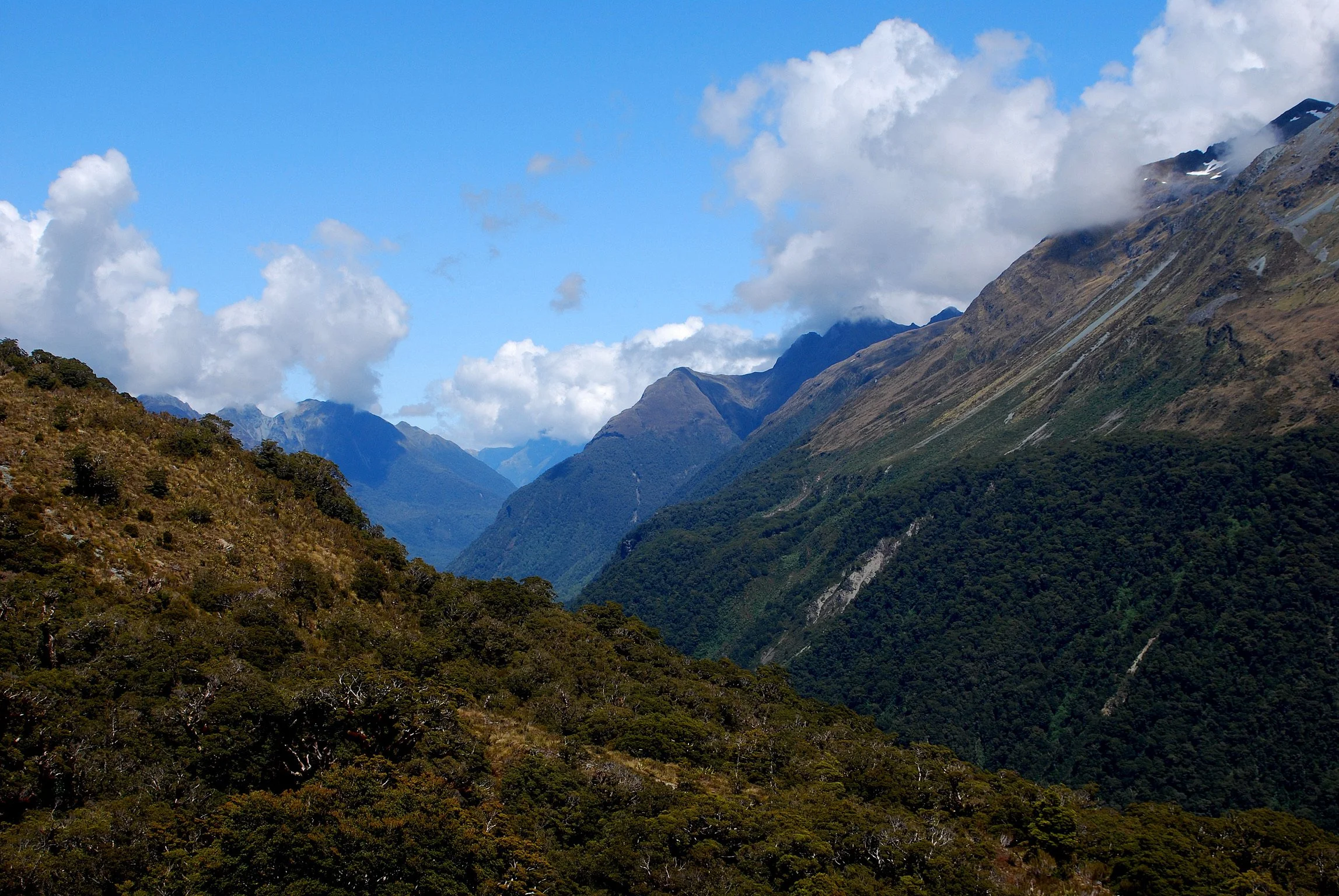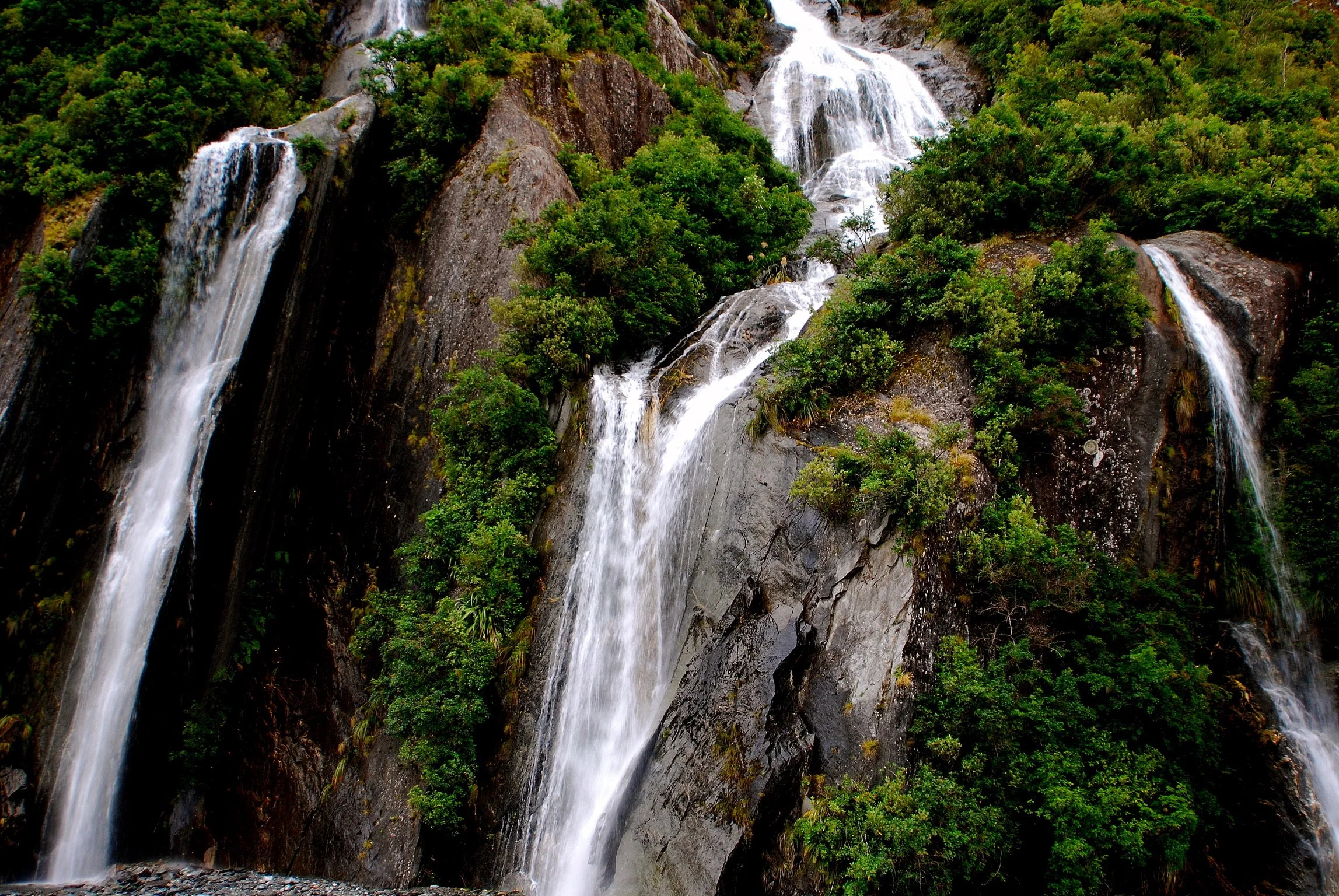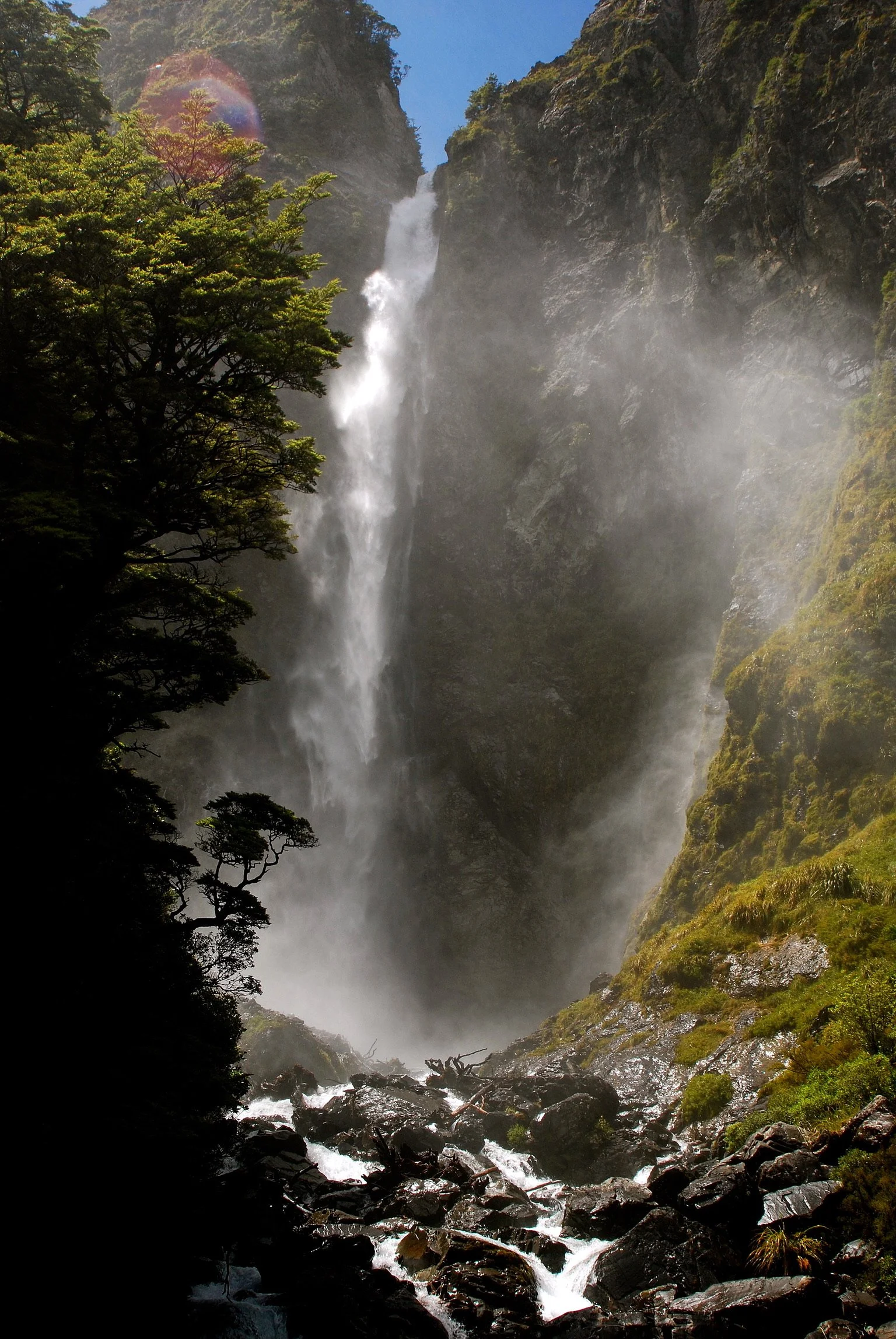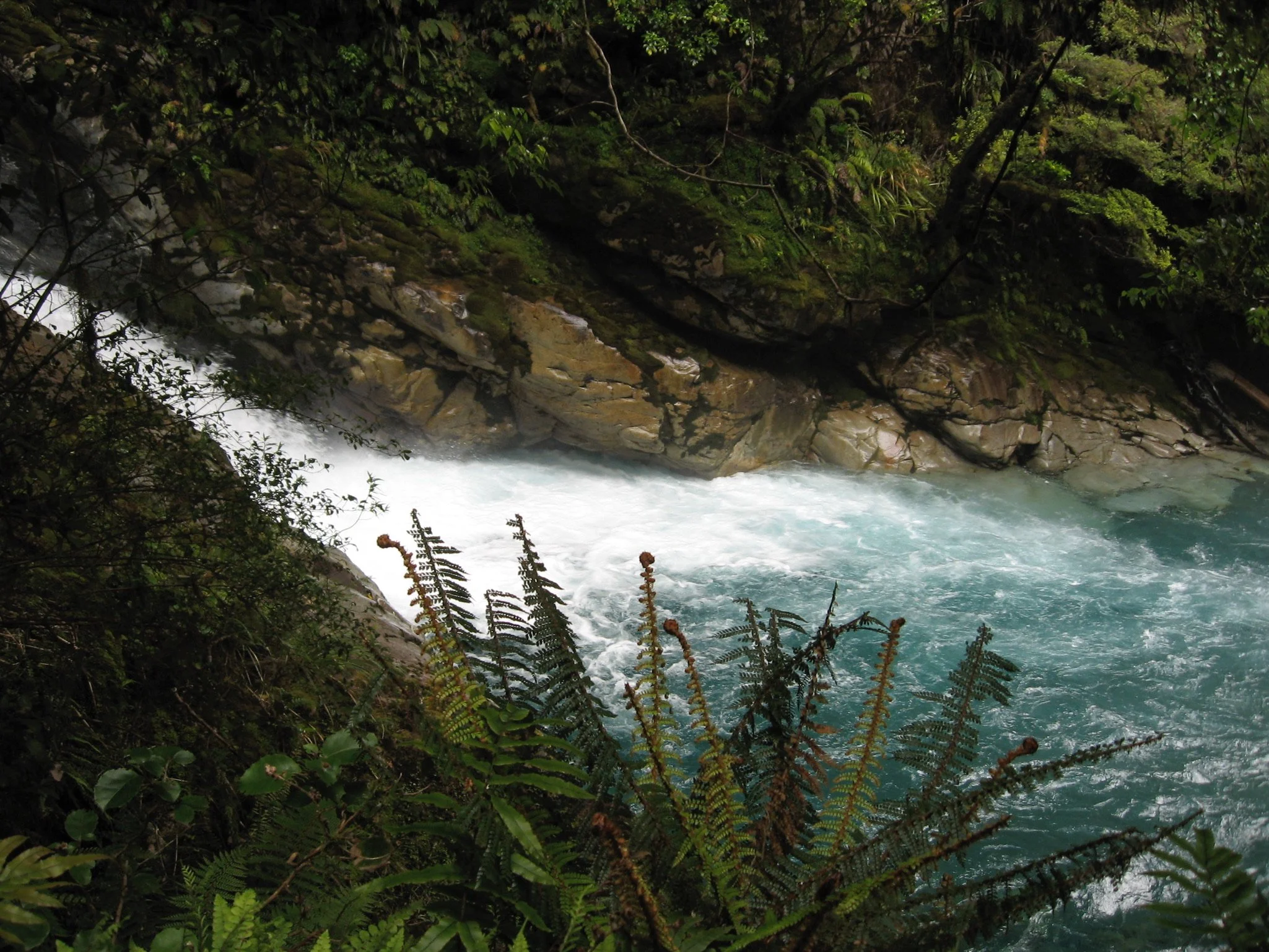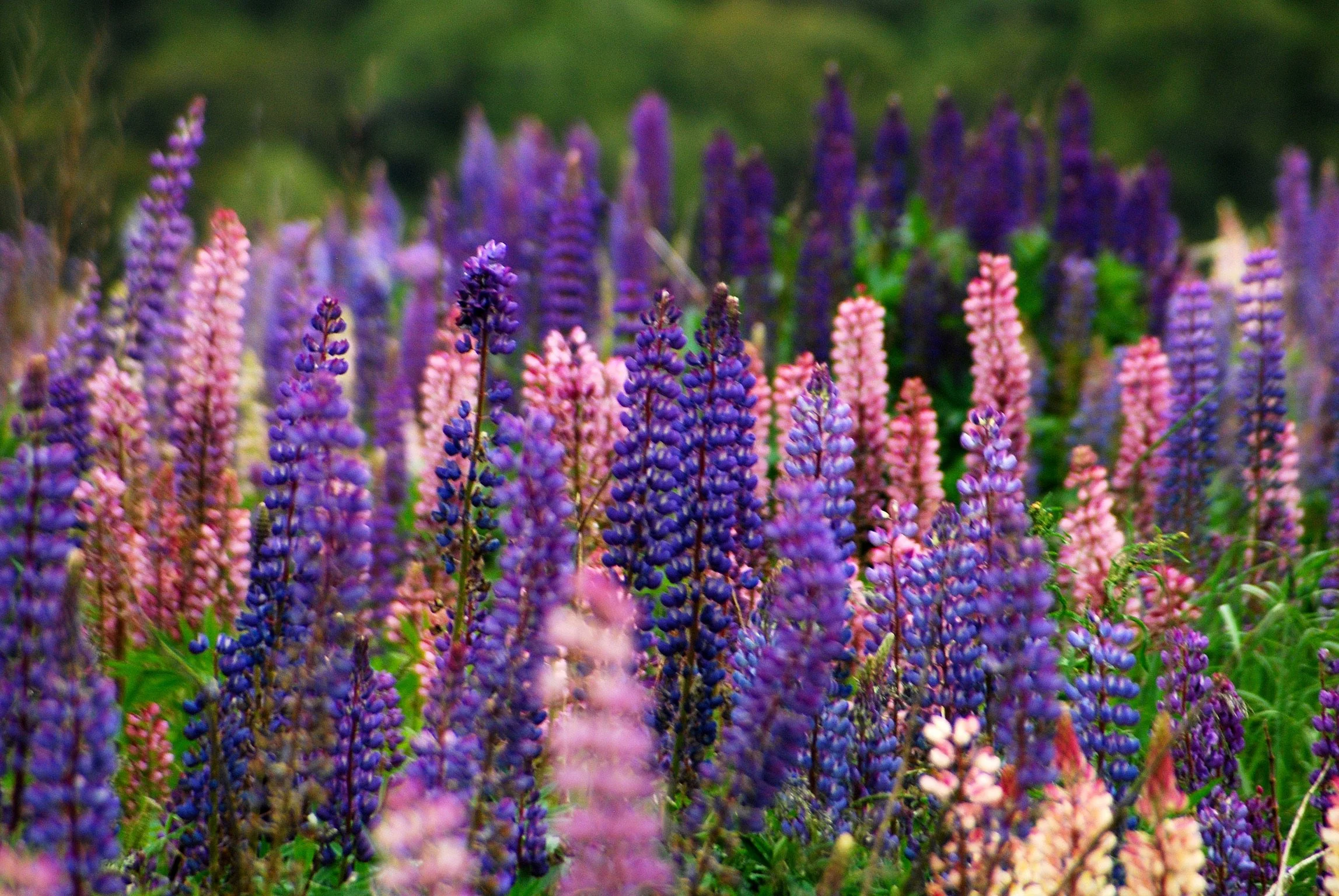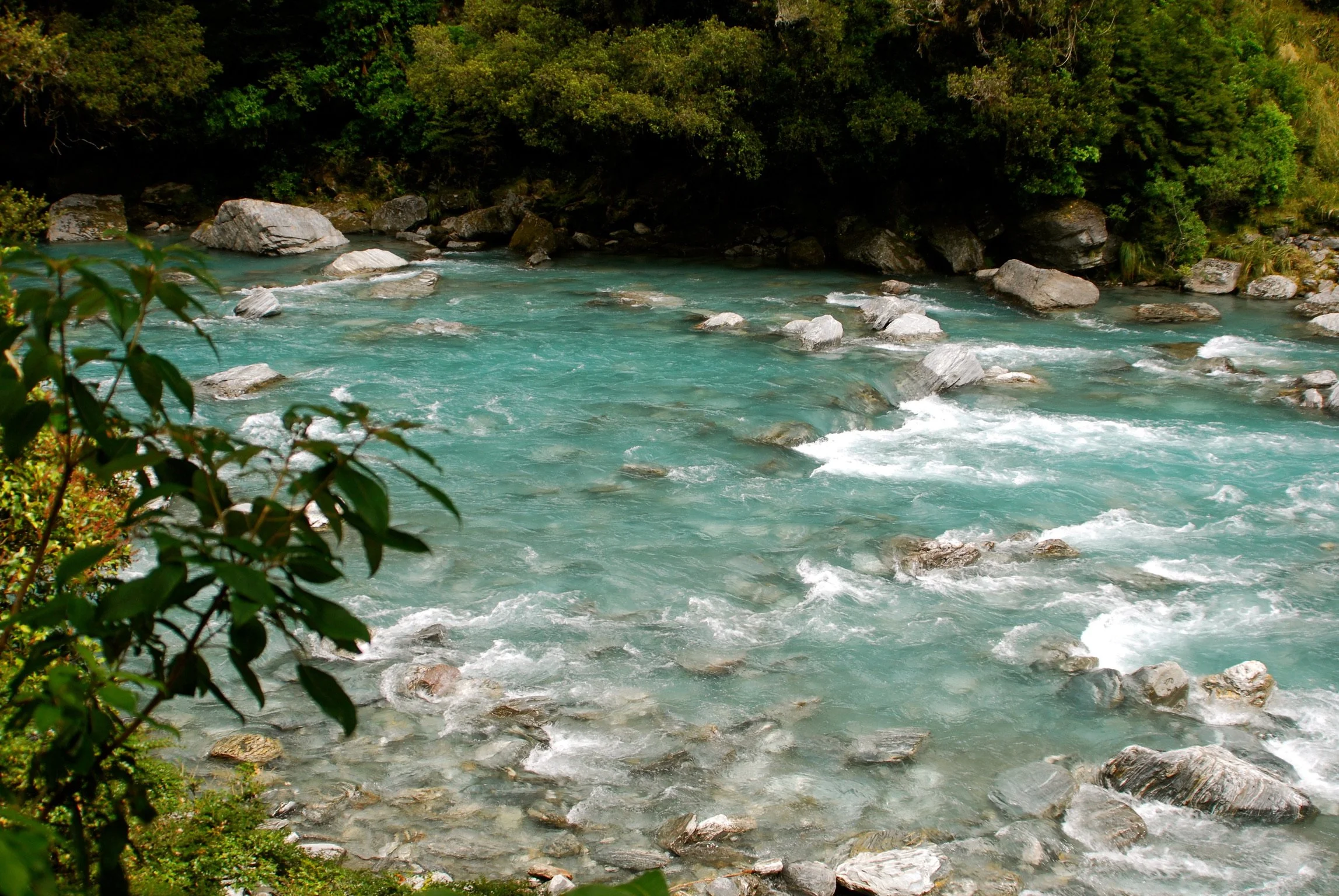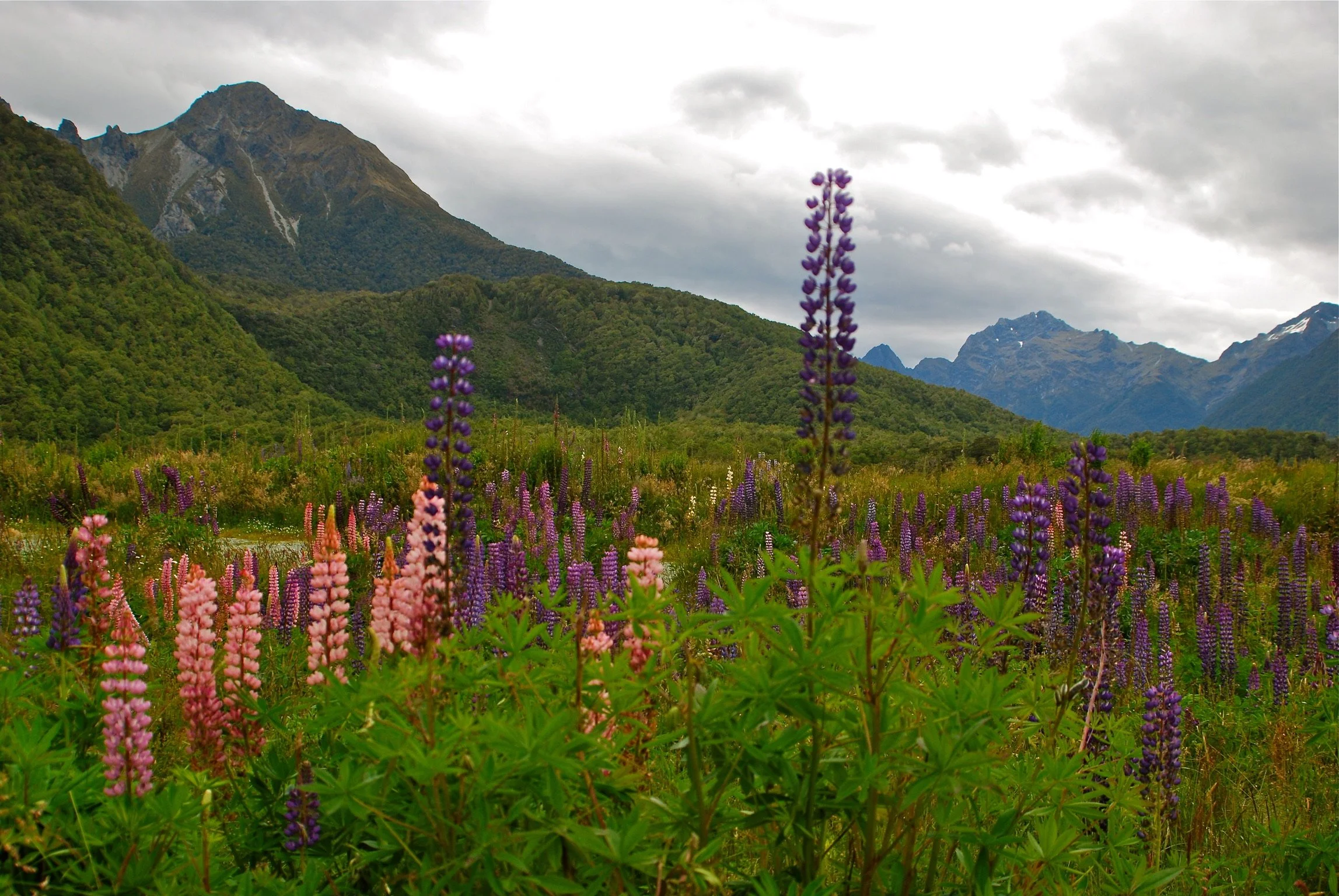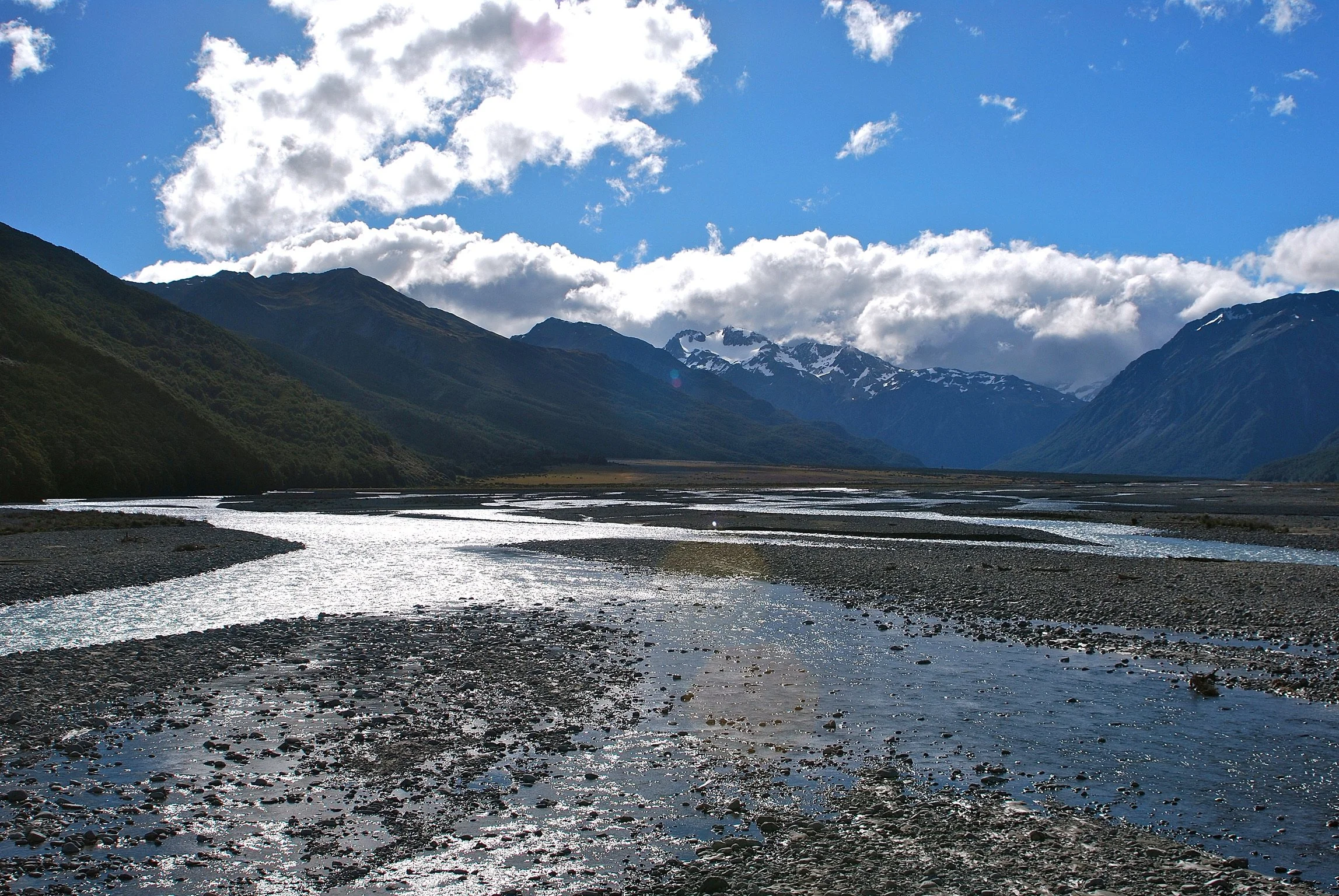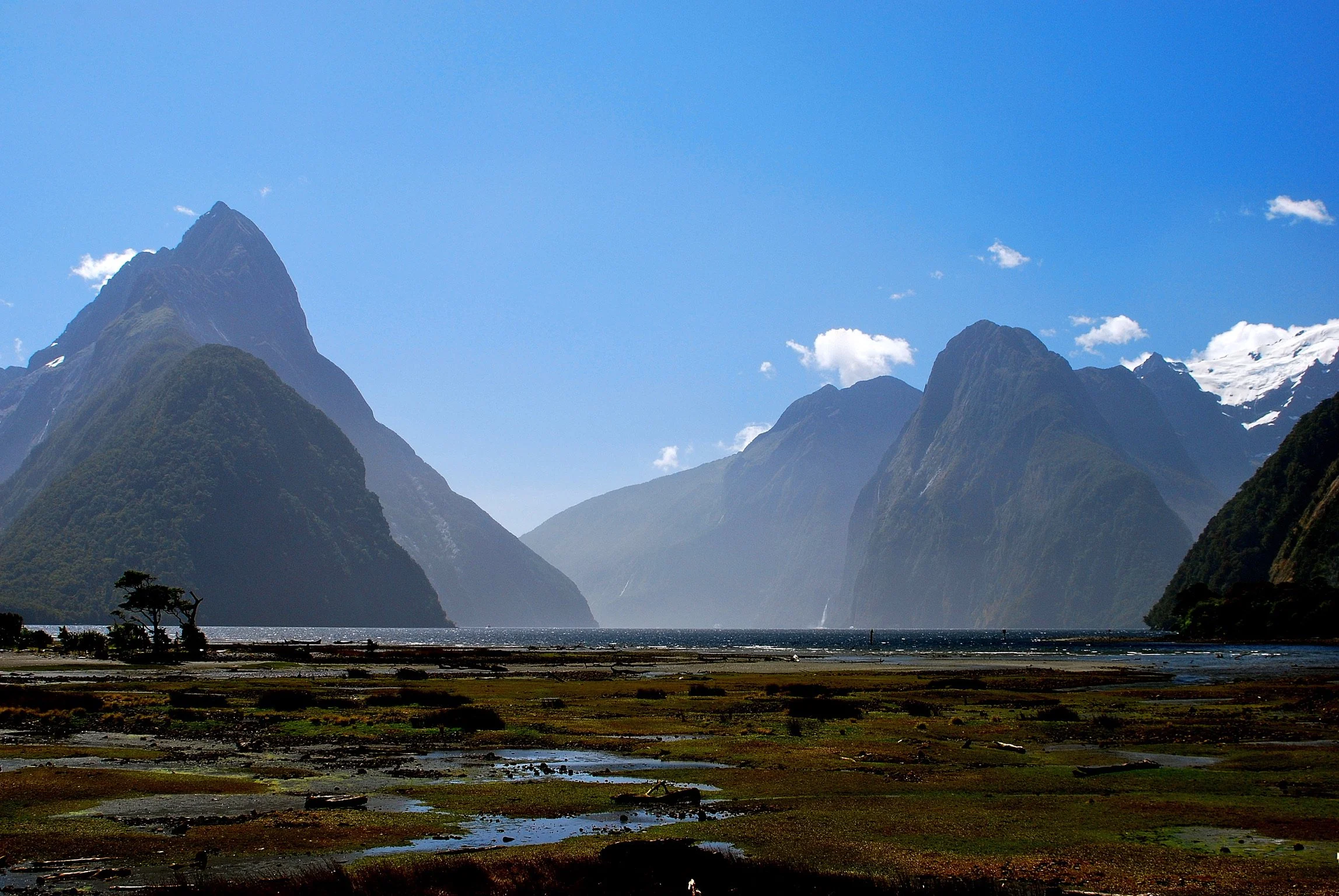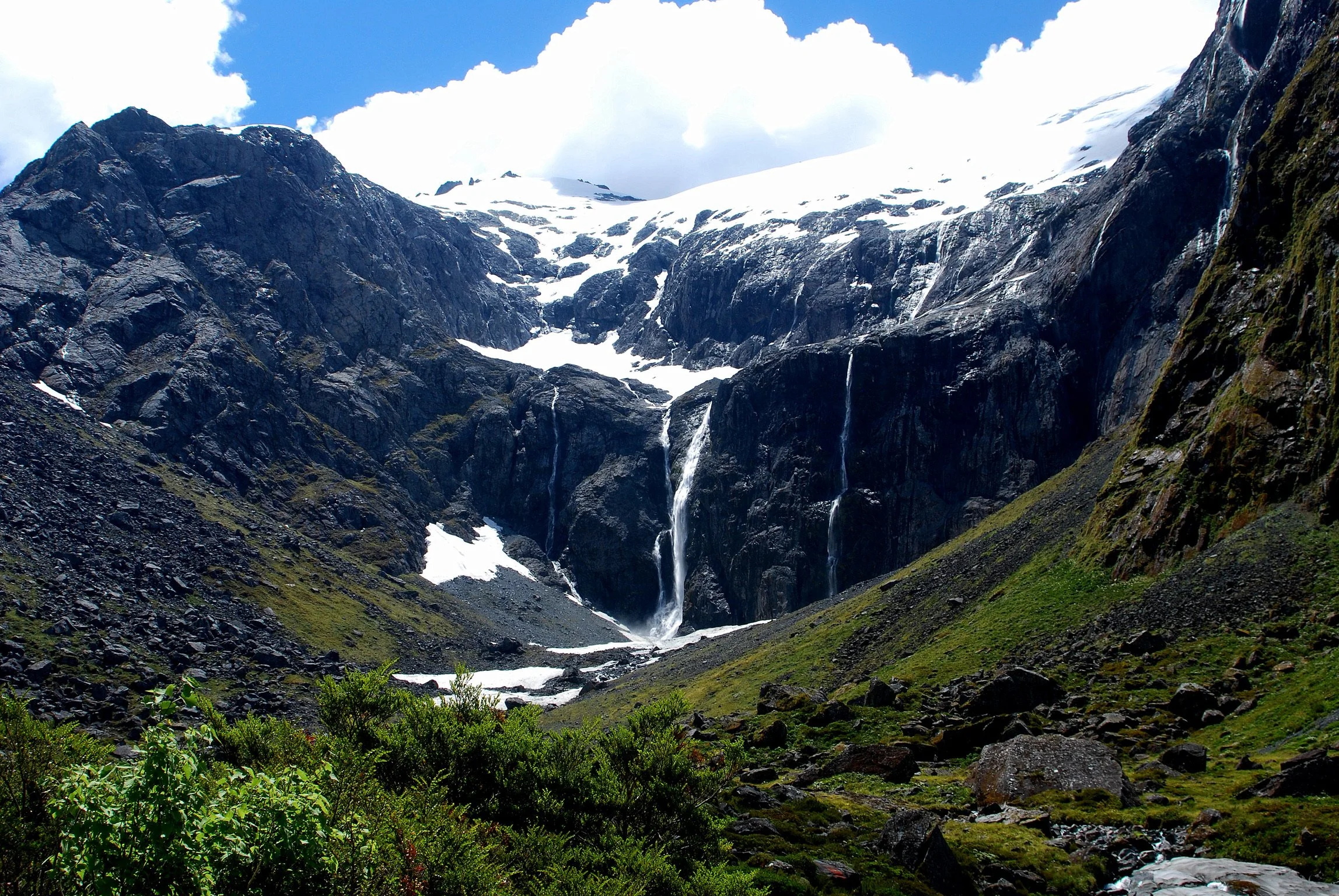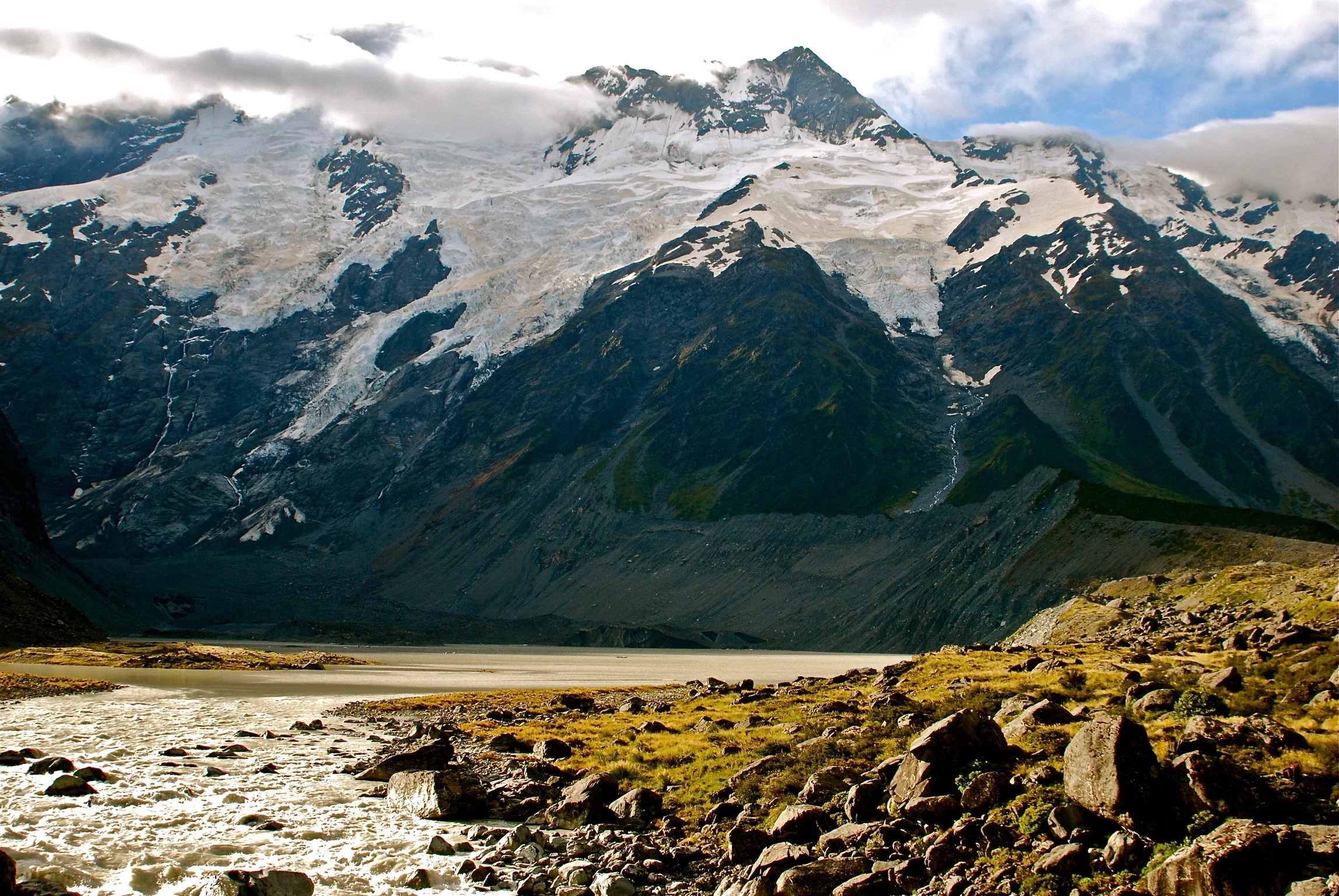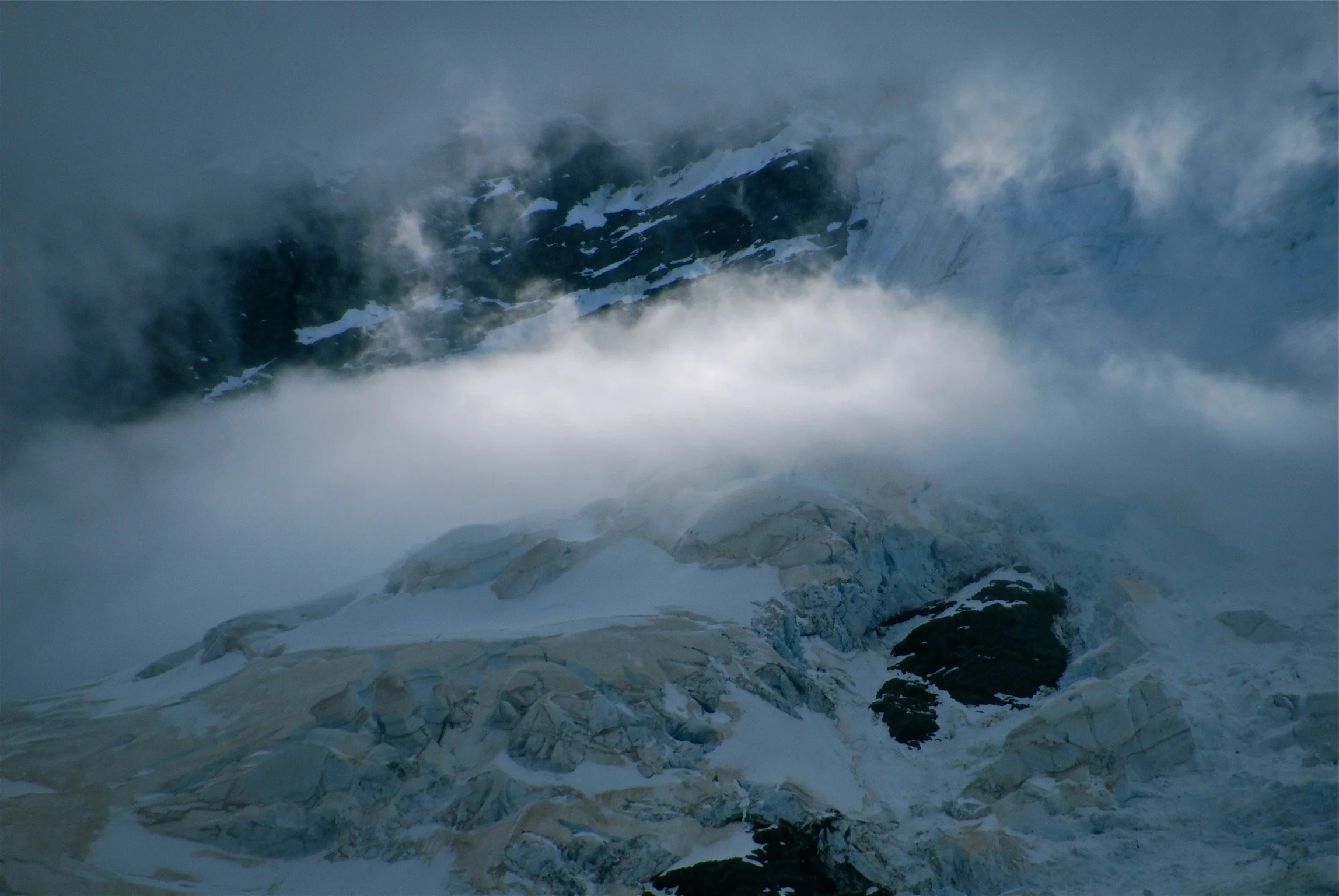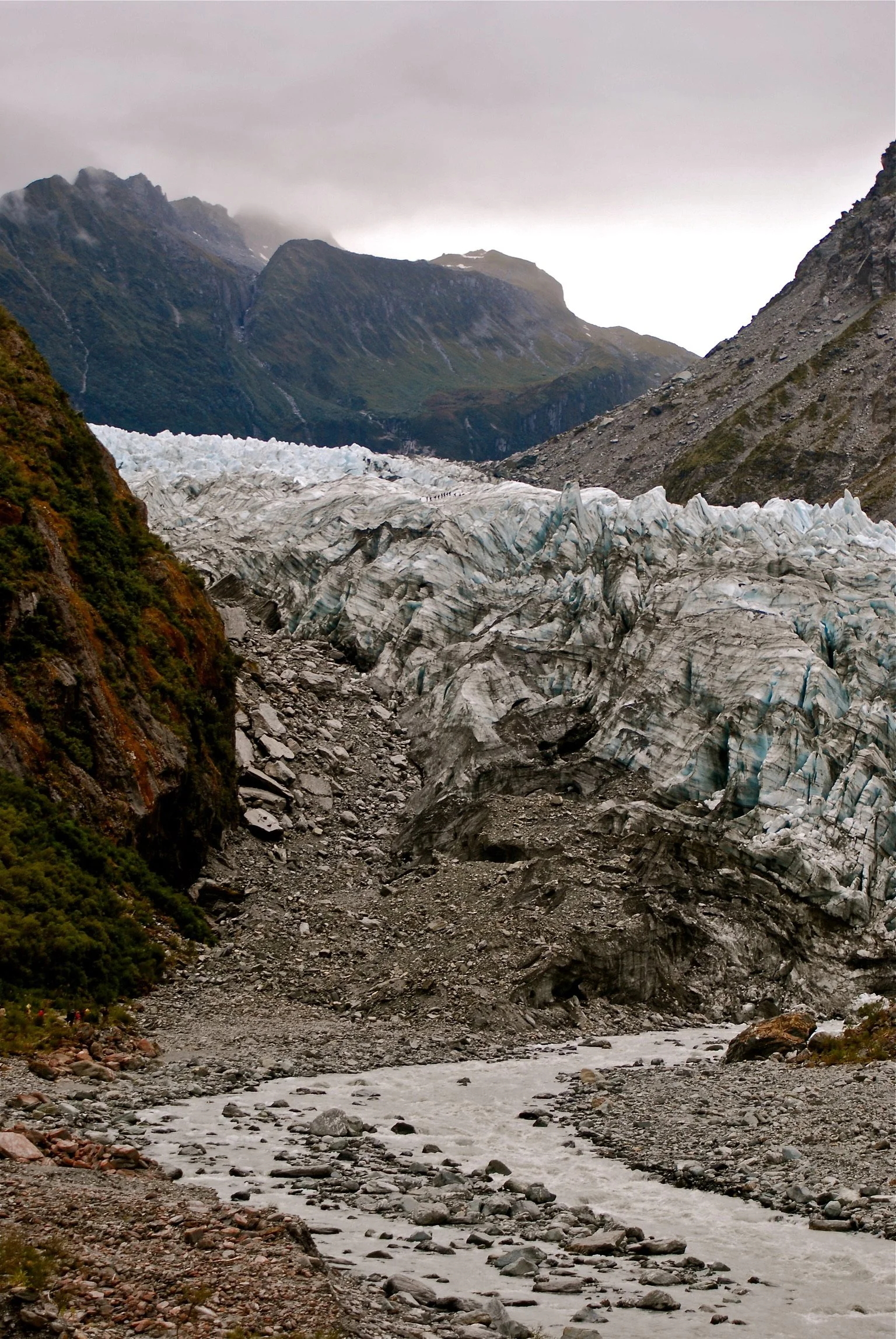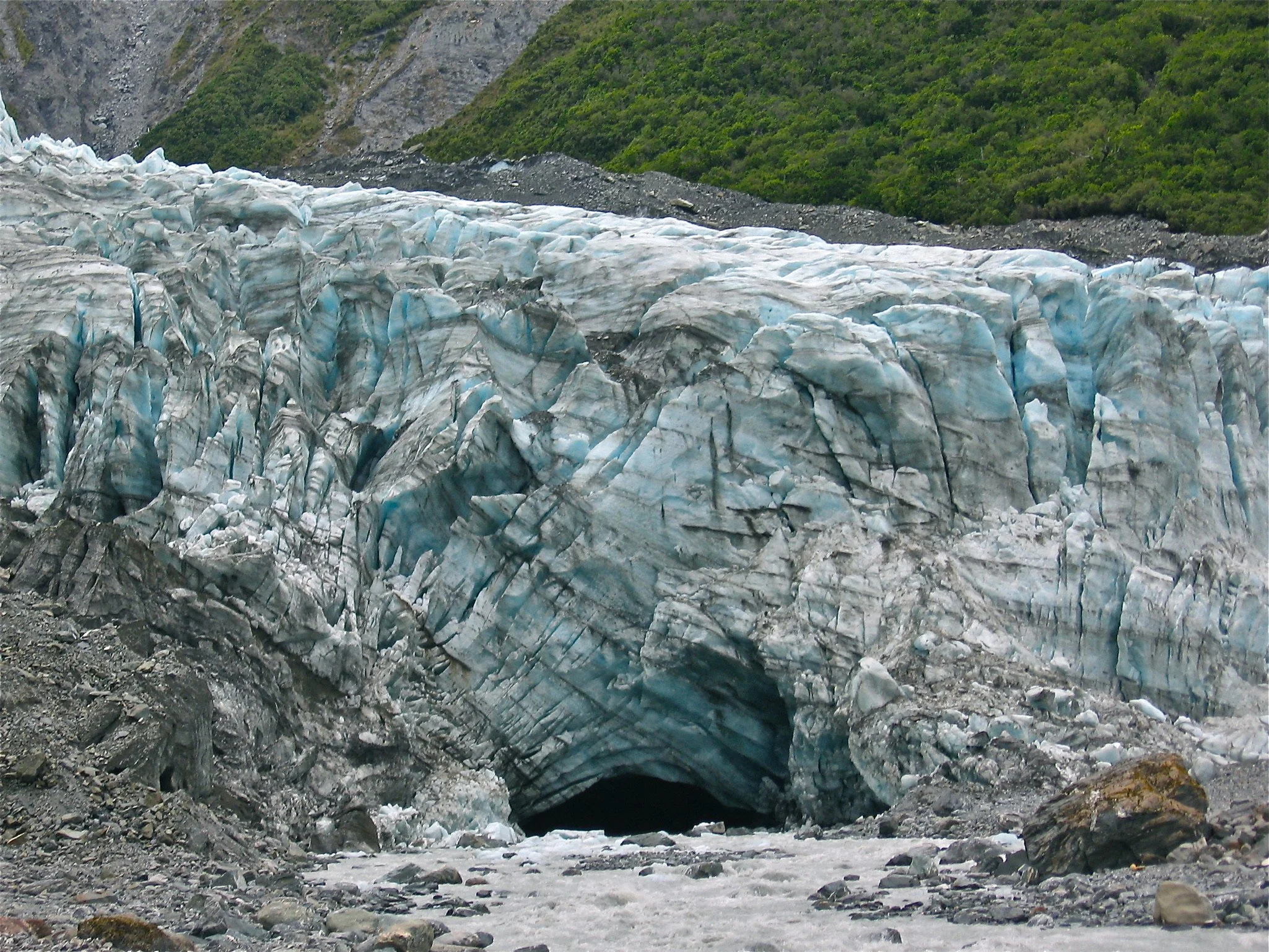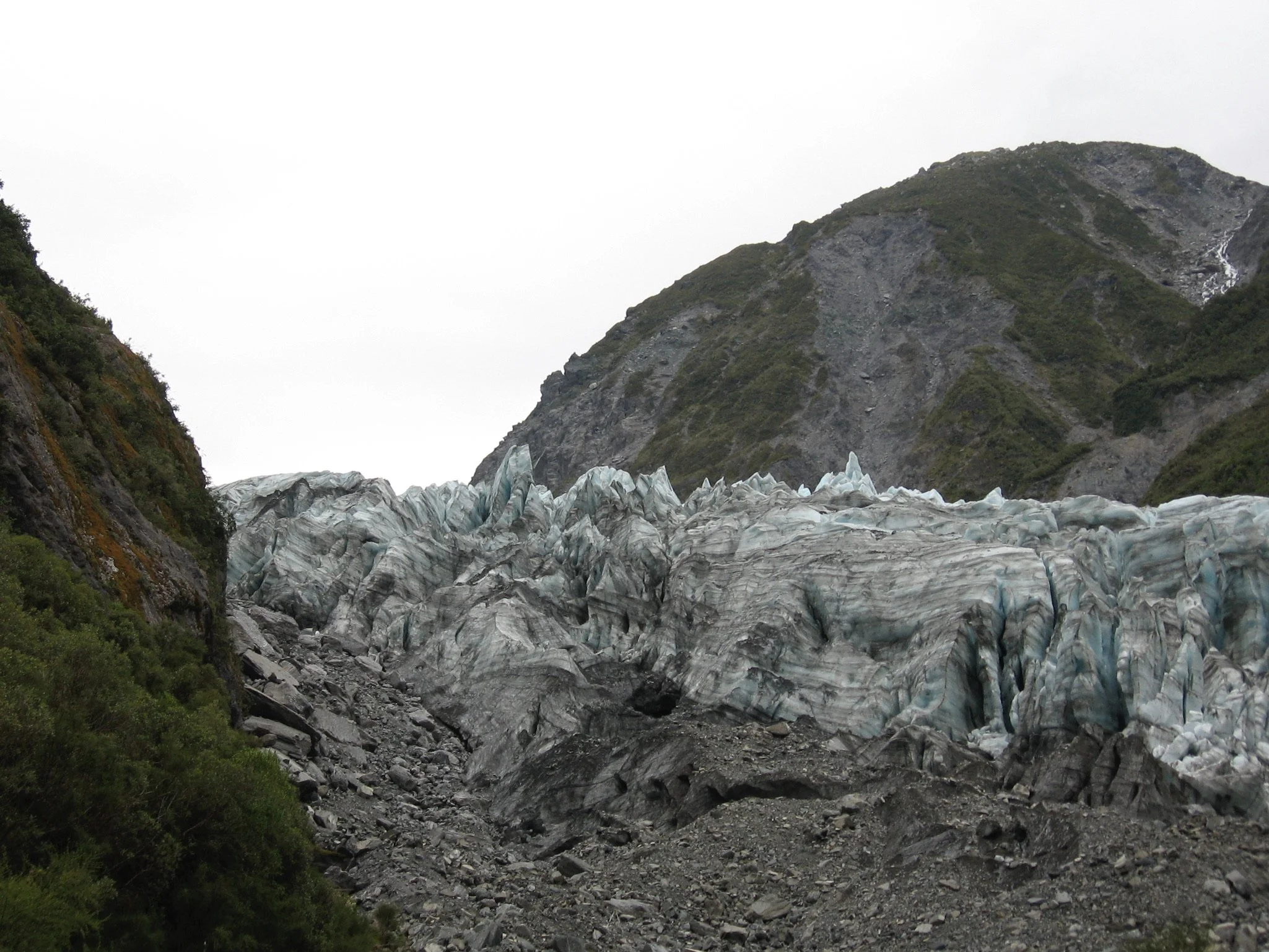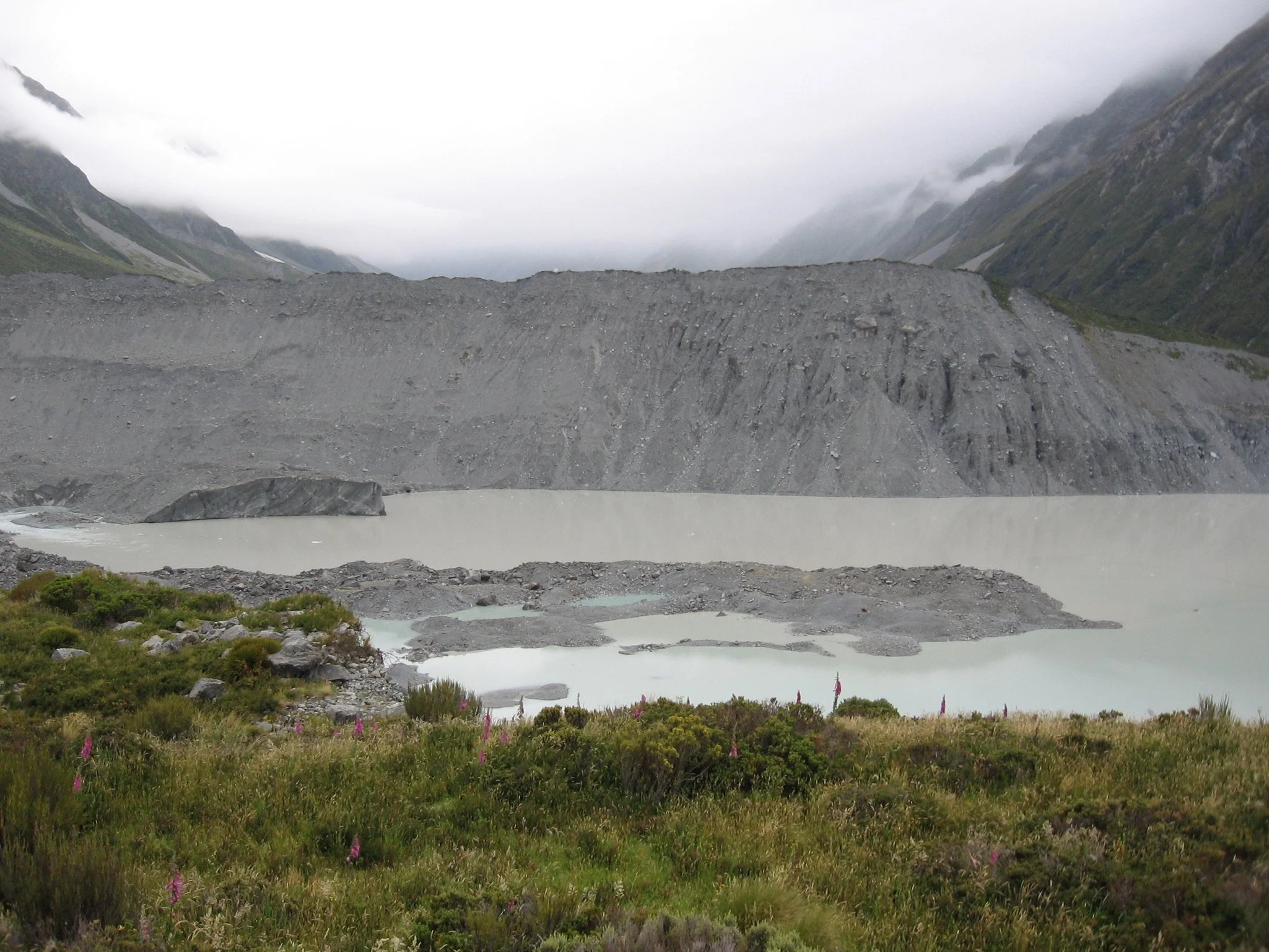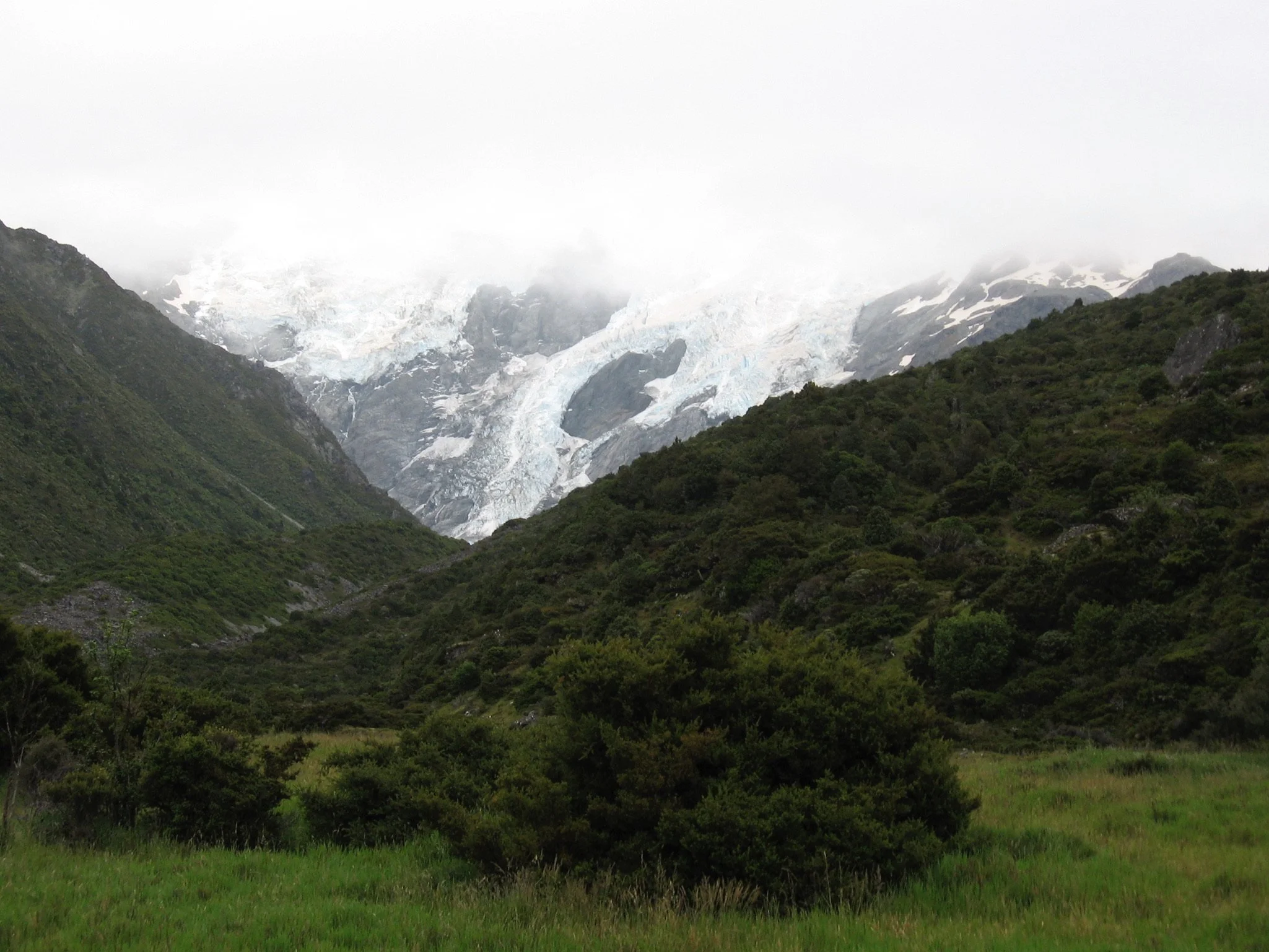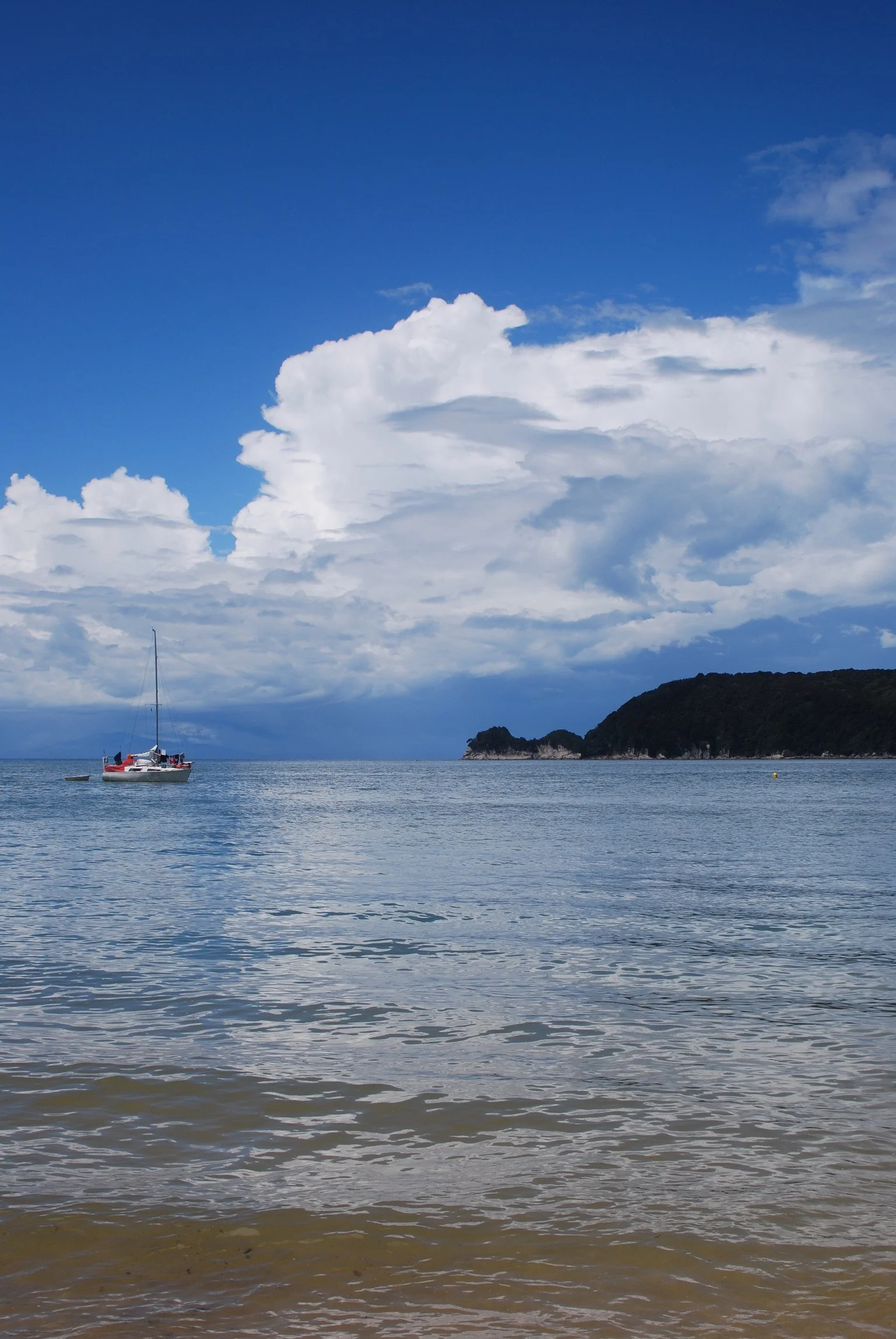Long White Cloud
The Maori call New Zealand's South Island the “Land of the Long White Cloud.” It rained nearly every day, allowing for great familiarity with the Cloud. Alternatively, the rare unveiling of the sun encouraged the surfacing of extreme sand flies, mini participants in another one of New Zealand’s famous adventure sports: blood-sucking. One way or another, we spent many evenings inside the shelter of Shadowfax, our ancient white rental Corolla. We tried to keep the sandflies from sucking out our joie de vivre, but it turns out that these little creatures are fiercely persistent: many were willing to sacrifice themselves for the good of the herd, swarming around our faces while their friends attacked our ankles. (A day without sandflies is a beautiful day, indeed.) Nonetheless, we were among the luckiest tourists in all of New Zealand, having chosen the only sunny day during the entire summer month of January to kayak on Milford Sound. After offering a gourmet feast to the sandflies during our land-based briefing on the safety features of the double-kayak, we set out on the water. Amazing vertical cliffs, waterfalls that appear and disappear, baby seals on rocks, and no sandflies on the water!
We spent three nights at the Aoraki/Mt. Cook National Park. We're still not sure what the mountain actually looks like, but that's part of its charm. The first night, after giving up on setting up the parawing due to gale-force winds and sleet (which my traveling companion maintains was a matter of choice and not any indication of failure on the part of the parawing), we had some discussion about our campsite. We considered camping in a ditch to stay out of the wind, deciding at the last minute for flatter (and higher) ground. After a Biblical deluge that lasted from evening well into the next day, the site originally considered was a bonafide river! (Ahem...)
During one especially rainy afternoon, I drank a flat white in the visitor center. Monuments have been erected and multi-volume memorial books printed to honor and remember the almost 150 people who have died on the mountain. Bad timing, bad weather, poor preparation, misguided intentions; whatever the reason, the mountain hazards have claimed more than a few lives. Many of their stories anthropomorphize the mountain, and a not-so-subtle difference emerges between the Western and Maori frameworks. Conquering vs. Respecting shows up in conflicts of wilderness policy and management throughout the world. Regardless of one’s orientation to this debate, something about the mountain (and its metaphors) pulls many toward its summit, despite (or perhaps, in some cases, because of) the hazards and hardships. It is a pull that is impossible for me to understand in the physical sense – I’d rather look up and stand in awe. But I wonder whether it might not be the same pull that a musician experiences: the pull toward a truth or an absolute that we only see glimpses of. We see parts of the mountain peek through the clouds, and feel the power of what lies unseen behind them. Somewhere in there is more.
While driving, I experienced my first Sheep Jam. (I had no idea this actually happens in real life.) Green mussels did not disappoint; I had them for breakfast. Twice. The Pancake Rocks really do look like pancakes. At the Franz Josef Glacier we stood on the ice, wondering if it would still be there when we next return to New Zealand. We were gifted another uncharacteristically sunny day for another day on the water, at the Abel Tasman National Park. And we successfully sugared three weeks worth of tea, coffee, and sundries using only sugar packets collected surreptitiously from restaurant tabletop collections.

